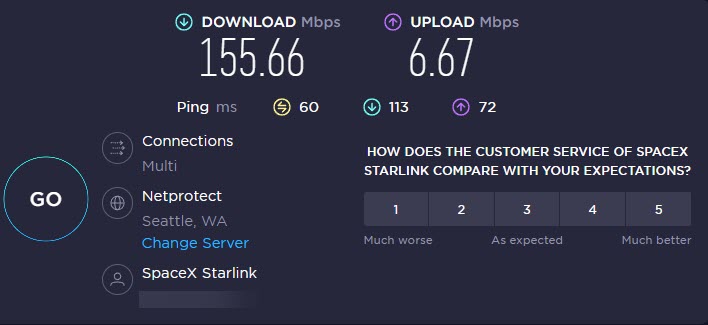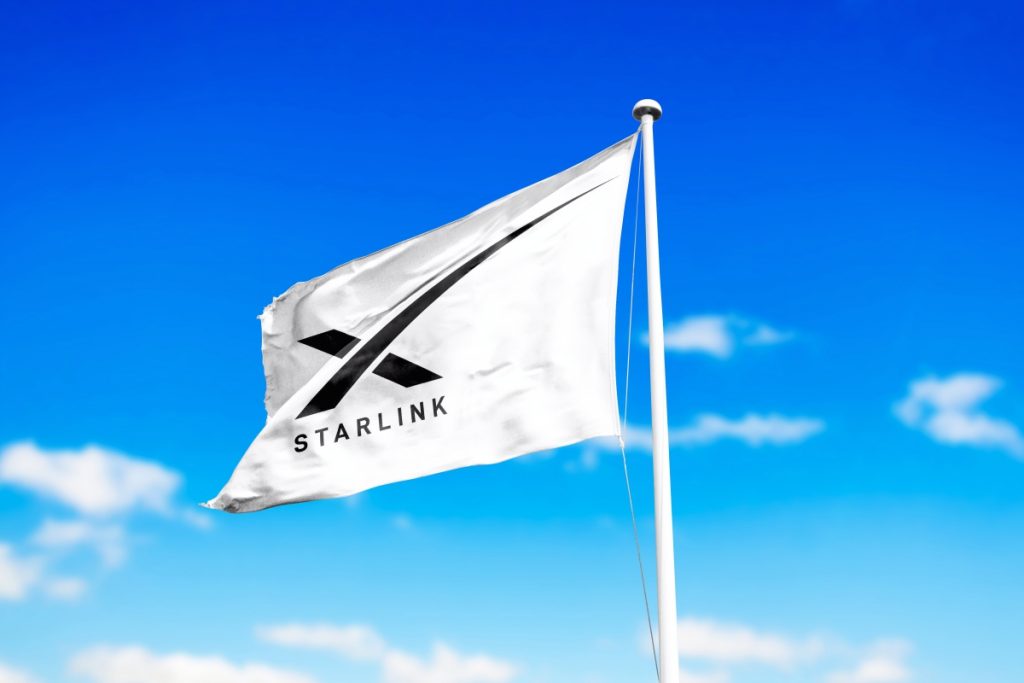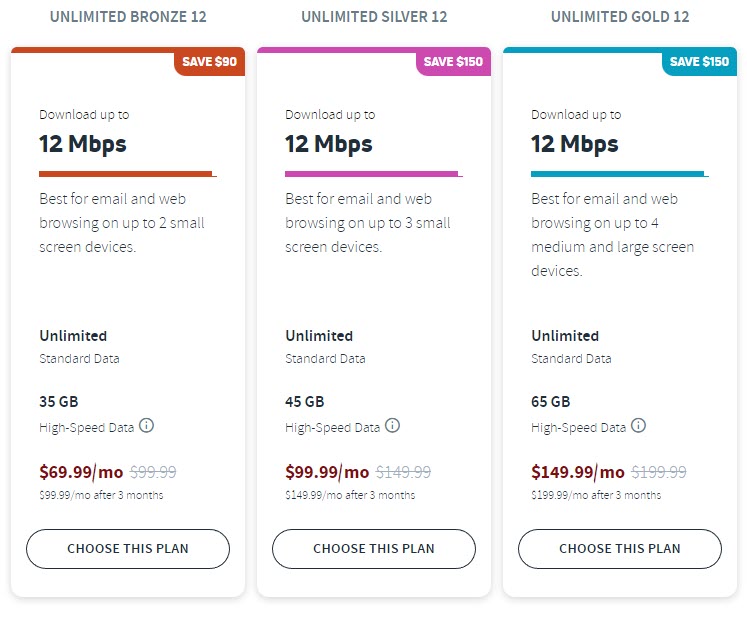Are you looking at your options for rural internet, and are wondering whether you should go with Viasat or Starlink?
While these are both satellite internet companies, the two of them operate very differently, and one of them is leagues above the other in most categories.
In this article, I will conduct an honest review and comparison of both Starlink and Viasat – highlighting the differences between the two of them in a number of different categories such as speed, customer service, data caps, and more.
That way, you can decide which of the two are right for you!
Starlink Vs. Viasat – Speeds
One of the most important factors when it comes to choosing internet, is how fast the upload or download speeds are.
Between the two of them, Starlink wins hands-down.
Currently, Viasat offers plans up to 150 mbps, though these aren’t available in all areas. This is much faster than Hughesnet’s 25 mbps maximum, but not nearly as fast as Starlinks 250 mbps range.
(Not to mention, their 150 mbps package is nearly twice the cost of Starlink.)
Here is an example Speedtest.net result that I took with Starlink. This is using their RV internet, which is even slower than the residential internet that most people purchase:

According to Ookla (who owns Speedtest.net), the average speed for Viasat tests is 22.31 mbps, while Starlink’s is 90.55 mbps. This number was based off U.S results from the 1st quarter of 2022.
Other countries utilizing Starlink scored even higher, with even higher download speeds.
We’ll discuss data caps a little bit later, but this is important. Viasat’s higher speeds are only offered until you pass their ridiculously low data cap. Once you do, your speeds will drop to a mere fraction of what it once was.
So, Starlink is the clear winner in terms of speed, and the results aren’t even close.
Starlink Vs. Viasat – Latency

Next up, we have latency – otherwise known as ping.
Latency is an important factor if you plan on doing anything that requires real-time connectivity with others – for example, doing calls on Zoom, or playing online games with other people.
With increased latency comes increased lag time – or a delay in what you do on your computer actually reflecting to others.
Unfortunately, due to the position of Viasat’s satellites in orbit, their latency is significantly worse.
Actually, part of what makes Starlink revolutionary is how close the satellites are to Earth. Starlink satellites operate at about 340 miles (550 kilometers) above Earth, while Viasat satellites are as high as 22,236 miles – or over 35,785 kilometers above Earth.
Because data has to physically travel to the satellites and back, the increased distance directly correlates with increased latency. And unfortunately, Viasat is so bad, it makes everything but turn-based online games practically unplayable in any sort of competitive setting.
Further Reading: Is Starlink Good For Gaming? (An Honest Assessment)
According to Ookla, the average latency of Starlink tests was 43 ms, and the average latency of Viasat was 628 ms – or 14.6x worse.
While you may not notice the increased latency quite as much with normal web browsing (or even streaming video), it is extremely noticeable on calls or while playing online games.
So, you should certainly keep this in mind depending on what you plan to use your internet for!
Starlink Vs. Viasat – Which Is More Reliable?
So far, we’ve seen that Starlink has won both in terms of speed, as well as latency. But is it more reliable as well?
The truth is, Viasat and Starlink are about tied when it comes to reliability, and both are improving their reliability in different ways.
Although Starlink satellites operate much closer to Earth, they are prone to the same problems as Viasat satellites.
Things like weather, network congestion, and obstructions blocking your dish’s view to the sky can drastically slow down speeds, especially during peak hours when other people are using the internet the most.
That being said, Starlink and Viasat are both in the process of launching new satellites. While Starlink is launching them more quickly, Viasat’s network congestion is also decreasing in many areas due to people leaving them for Starlink.
As for entire internet outages, neither company tends to have a problem with these – slowdowns are much more common – again, only during peak hours.
Of course, neither are reliable as ground-based cable or fiber internet providers like Spectrum or Xfinity.
Viasat Vs. Starlink – Data Caps

If the speed and latency issues weren’t enough, the data caps may be.
Currently, Starlink has no data caps at all, with the exception of users in France.
In France, users are limited to 250 gigabytes per month before reaching deprioritized speeds. Meanwhile, everywhere else in the world, there is no data cap and no throttling whatsoever for Starlink’s residential internet.
Viasat on the other hand has a ridiculously low data cap, to the point where it almost makes the service unusable for any serious internet user.
For example, their largest plan offers up to 150 gigabytes of high-speed data, before your speeds are throttled down significantly.
In my area, the best plan available was 65 gigabytes of data, at 12 megabytes per second. The cost for this is $199.99 / month after the promotional period ends.
For reference, my household of 2 people often uses more than this in a single day. 65 gigabytes equals about 22 hours of HD streaming, or around 40 minutes a day on one device. Throw in things like computer updates or downloading games, and it’s clear how simple it is to blow through such a small data cap within days at best.
After you’ve used up all of Viasat’s data cap, you still technically have internet access – it is just heavily slowed down. While reports say you can expect 3-5 mbps on average, many users realistically report getting less than 1 megabyte per second at times – even waiting several minutes for a single page on Amazon to load.
You can purchase additional high-speed data, but it is rather expensive – about $1-2 per gigabyte, depending on how much you order at a time. More information on purchasing data from Viasat can be found here.
So although Viasat’s fastest plans are capable of HD streaming, you don’t have very long before your data cap is entirely used up.
Viasat Vs. Starlink – Customer Service
Neither Viasat nor Starlink are known for having great customer service – but each one is better than the other in different ways.
Viasat offers a phone support option, where Starlink does not. Additionally, because Viasat has been in business so much longer than Starlink (2012 vs 2019), their customer support agents have more experience dealing with obscure or uncommon issues that may pop up while using your internet.
However, anecdotal reports from other Viasat users have complained that wait times are long, and entry support agents aren’t able to actually do a lot beyond providing basic troubleshooting instructions (such as telling you to restart your modem, which isn’t very helpful if you know basic troubleshooting already.)
Starlink on the other hand only allows you to contact them online. However, when you do get a response, it seems to be more thoughtful and genuinely helpful. Starlink’s mobile app also provides a lot of diagnostic information that can help customer support directly pinpoint the cause of issues, to solve the problem more effectively.
Viasat Vs. Starlink – Setup
Neither Starlink or Viasat provide their equipment for free, and you will need to pay additional setup costs in order to have the satellite dish provided to you.
For Starlink the only option is to pay an upfront cost of $599, which can put it out of budget for many people. Starlink does not currently offer any rent-to-own or monthly payments for their hardware kit.
Viasat on the other hand provides their equipment for a one-time fee of $299.99, or it can be leased for an additional $10 a month. Note that this is in addition to the monthly fee you will already be paying for internet service.
For new customers, Viasat installation is free, and someone will come out to install it for you.
For Starlink, you will need to set it up yourself, but the process is very simple and only takes a few minutes. Starlink also sells a wide variety of mounting accessories, which you can learn more about here.
Viasat Vs. Starlink – Cancellations And Contracts
Let’s say that you end up moving to an area with different internet options, or you simply want to end your service with the company.
Between Viasat and Starlink, who has higher cancellation fees, or more strict contracts?
Currently, Starlink has no contracts or long-term commitments. You are free to cancel your service at any time, and you will not pay any additional fees.
However, you will be out the cost of Starlink’s hardware, which you cannot send back for a refund.
Viasat on the other hand requires a 24-month contract, unless you specifically pay for their no long-term contract option, which comes with a fee of $300 that will be added to your first month’s bill.
That being said, the early cancellation fee for Viasat is $15 / month of your remaining contract, according to their documentation page here.
So, unless you only plan on using Viasat for 4 months or less, it doesn’t make sense to purchase this option as mathematically you’ll end up paying more.
Note that if you only need internet for short periods of time, Starlink also offers a service for RVs, which you can also use at your home. This plan allows you pause and resume service at any time as frequently as you wish, even at new addresses. So, it’s a great option for travelers that frequently stay at different locations.
Starlink Vs. Viasat – Value And Overall Thoughts
Putting it plainly, I would almost never recommend Viasat to anyone who is able to get Starlink.
While Viasat can offer acceptable speeds – and could even beat Starlink on the rare occasion, this is made moot when you take into account their ridiculously low data cap.
At my location for example, the highest available plan offers only 65 gigabytes of prioritized data before it gets throttled down immensely. 65 gigabytes is enough for about 1 Windows update, and 1 download of a game. In other words, it’s very possible to blow through such a low data cap in a single day.
…Especially when that plan is almost double the cost of Starlink, and comes at a fraction of the speed.
Despite what Viasat states on their website, their service is not viable for gaming, streaming, or anything more than very light internet usage for one person, let alone for an entire family.
I would only ever recommend it if it and Hughesnet were your only options, or you were never home and hardly used your internet in the first place. If anything else is available, get it instead.
As for Starlink, Viasat does not even come close – the data and numbers do not lie!
Conclusion
If you’ve gotten this far into the article, it’s clear to see that Starlink is the clear winner – in fact, they surpass Viasat in almost every category.
While Viasat does offer cheaper minimum and setup prices – and is arguably better than Hughesnet, you are only getting a fraction of the power for the price. Viasat and Hughesnet alike simply aren’t powerful enough for modern internet usage – even for light users.
I hope that you’ve found this comparison helpful. If Starlink isn’t available in your area, I highly recommend picking up their RV service, which can still be used in your home. This will allow you to skip the line and get Starlink straight away.
Wishing you the best,
– James McAllister

Thank you for this balanced and comprehensive article.
Well organized and not overly wordy. If this were a term paper, you would get an A.
Helen(Quote)